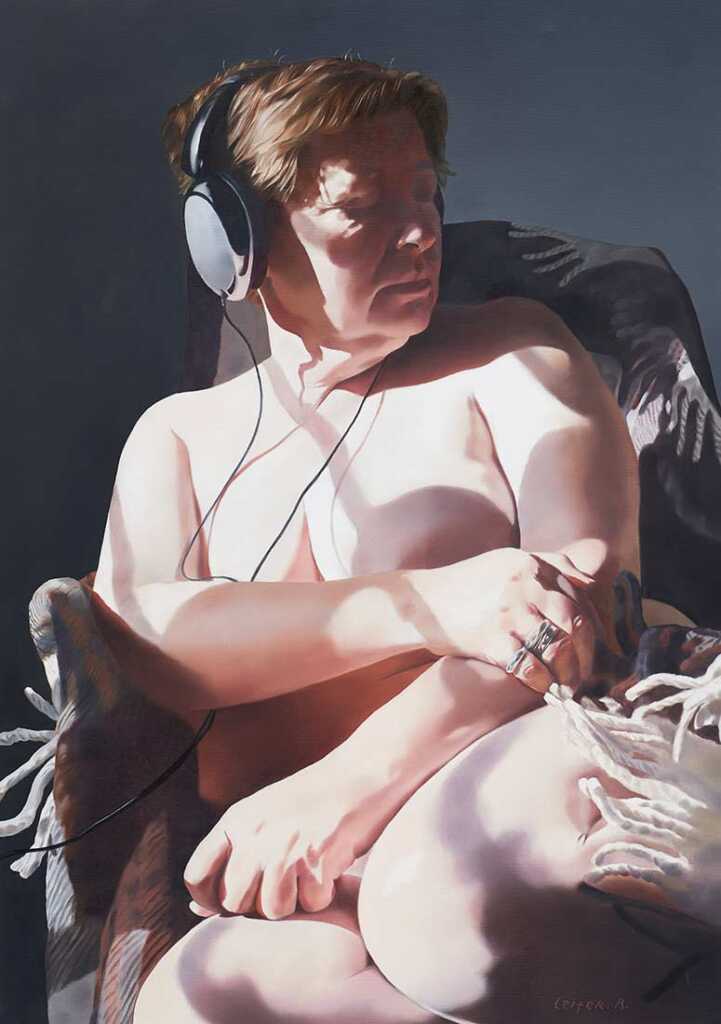
Oil on canvas. 100 X 70 cm.
Boris Leifer © All rights reserved
Boris Leifer | Vitality with no limitations of depth, field, or focus
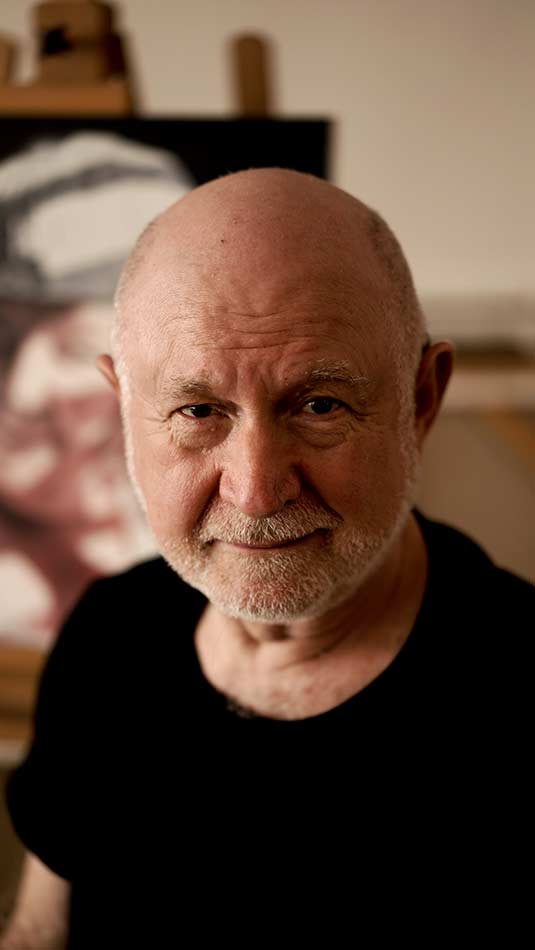
Boris Leifer was born in Ukraine in 1946. In 1969-1975 he studied at the Saint Petersburg Academy of Arts, an institution linked to traditional European painting. Subsequently, he worked as a set designer for the Russian theater. He graduated from the Repin State Academy Institute of Painting, Sculpture, and Architecture Leningrad (now Saint Petersburg, Russia) in 1975.
He is a member of the Union of Artists of Russia and of the Israel Union of Artists. Leifer participated in group exhibitions in Russia, Canada, U.S.A, Germany, Italy, and France. In addition, he presented solo exhibitions in Russia, Israel and U.S.A. Leifer also took part in the International Art-Expo exhibition in Moscow in 1998.
The works of Leifer are regularly exhibited in museums, galleries, and companies in Israel, Russia, and Italy and in private collections. Leifer won two prizes: International prize – Velazquez, Spain (2019) and Artist of The Year, Italy (2019).
In the last two years, Leifer worked on two series of paintings. In one series, he focused on still lifes of fruit, different kinds of food, and flowers, and in the second, depictions of his wife Nina – her face, her complete figure, or details of her.
Leifer’s ability to see Nina, the subject of his paintings, confirms a kind of penetrating vision that transcends boundaries and time. Leifer blends his emotional and empirical world when he paints her. Her face seems to flow with him, her eyes raised to him. In this way, the artist has created a kind of visual journal of Nina’s life, telling of changes in her. A journey through time in which each time is immortalized, and all the time. Leifer is careful not to beauty his model in his paintings; he carries out a kind of spiritual-psychological study of her, and in this way, he himself becomes an artist studying life.

Oil on canvas. 77×114.5 cm.
Boris Leifer © All rights reserved
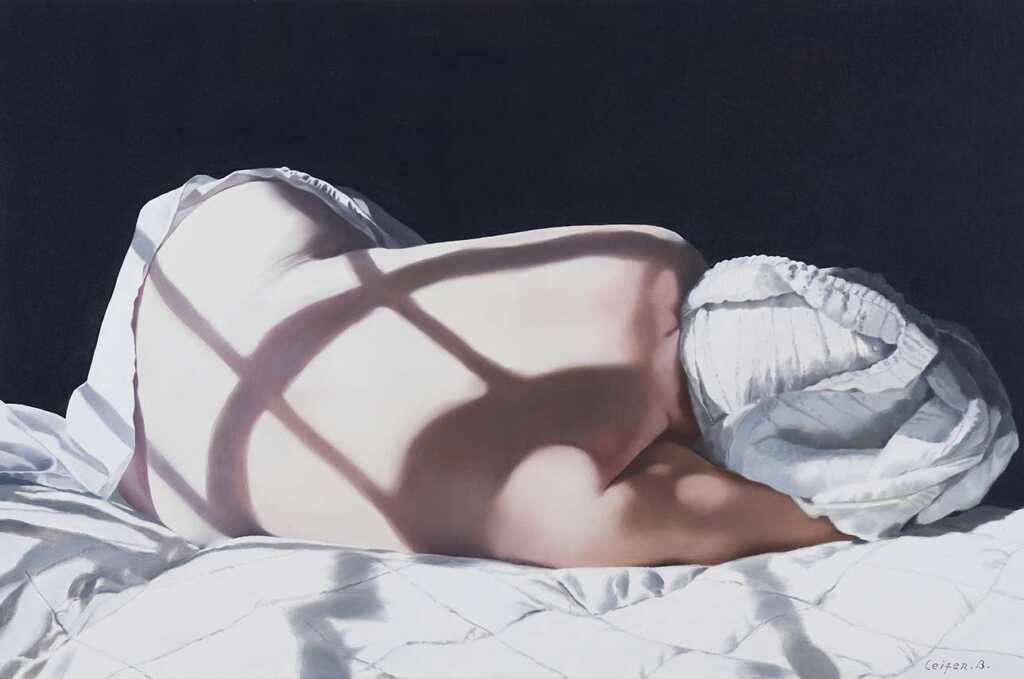
Boris Leifer © All rights reserved
Looking at the entire series of Nina’s paintings made in the studio at the couple’s home, the space is detached from reality and current time since Leifer is careful to leave the background around her portrait or her entire figure completely abstract. By doing this, he creates another environment and time, outside time and beyond time.
Leifer chooses to paint Nina, the person closest to him, as his model. Her depiction is characterized by a strong influence from the art of Baroque painting, in which there is an emphasis on sentimentality, dynamism, complexity, a merging of contrasts and movement. He looks at her closely and draws every wrinkle or fold of her skin on her body while accurately tracing the smallest of details. Leifer also creates drama in these depictions through the play of light and shade (chiaroscuro). The interplay of light and shade is reminiscent of Caravaggio’s paintings (1557-1610), who was a pioneer of the Baroque style of painting in Italy. Like Caravaggio, Leifer also appeals to the senses, the emotions, and the imagination in his work, while striving for astonishing achievements that will enchant and captivate the viewers` hearts.
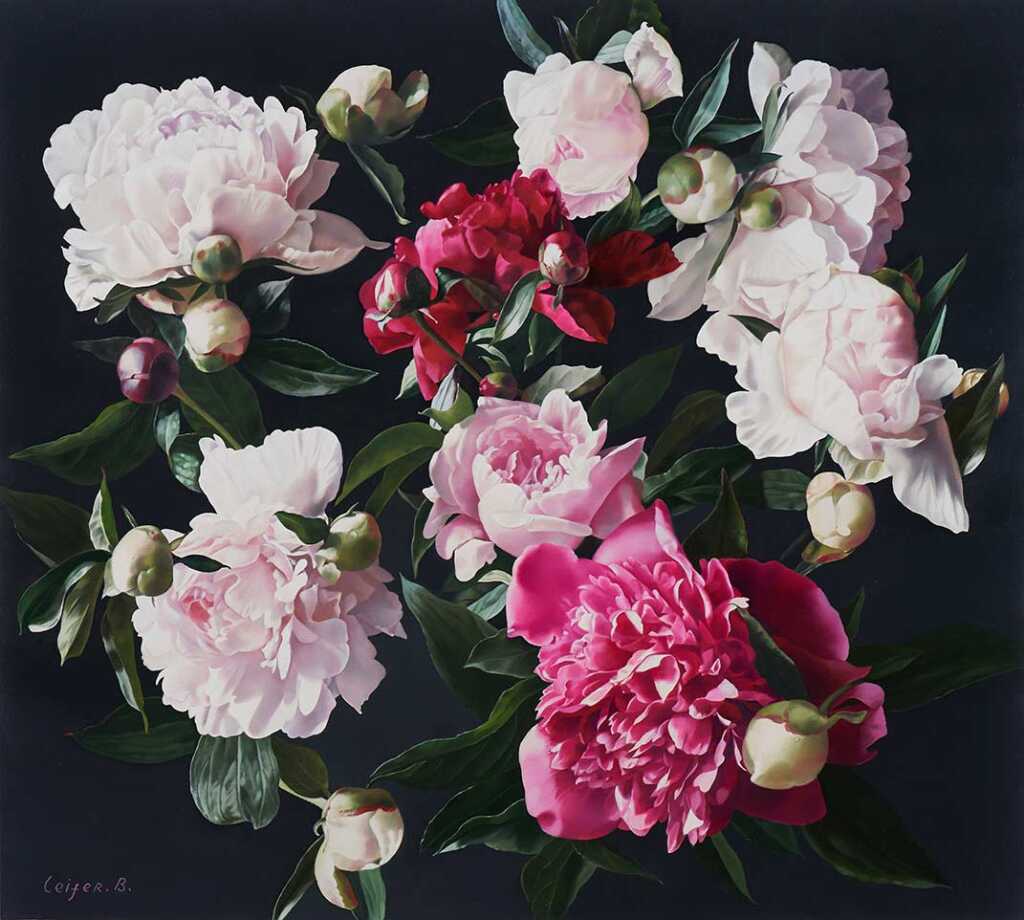
Oil on canvas. 81×90 cm. Boris Leifer © All rights reserved
Leifer’s model paintings remove the illusion of three dimensions, the mimesis, from the painted surface.
His second series of paintings depicts fruit, types of food, and flowers – in all of which Leifer makes considerable use of photorealistic style. This style is expressed in photographic realism: a painting that looks like a photograph and, in most cases, is also painted from a photograph. However, as a multi-talented, skilled, and sharp-eyed painter, Leifer creates a more accurate painting than a photograph. A painting that has more vitality and is not subject to limitations of depth, field, or focus. – Orna Fichman. August 2021
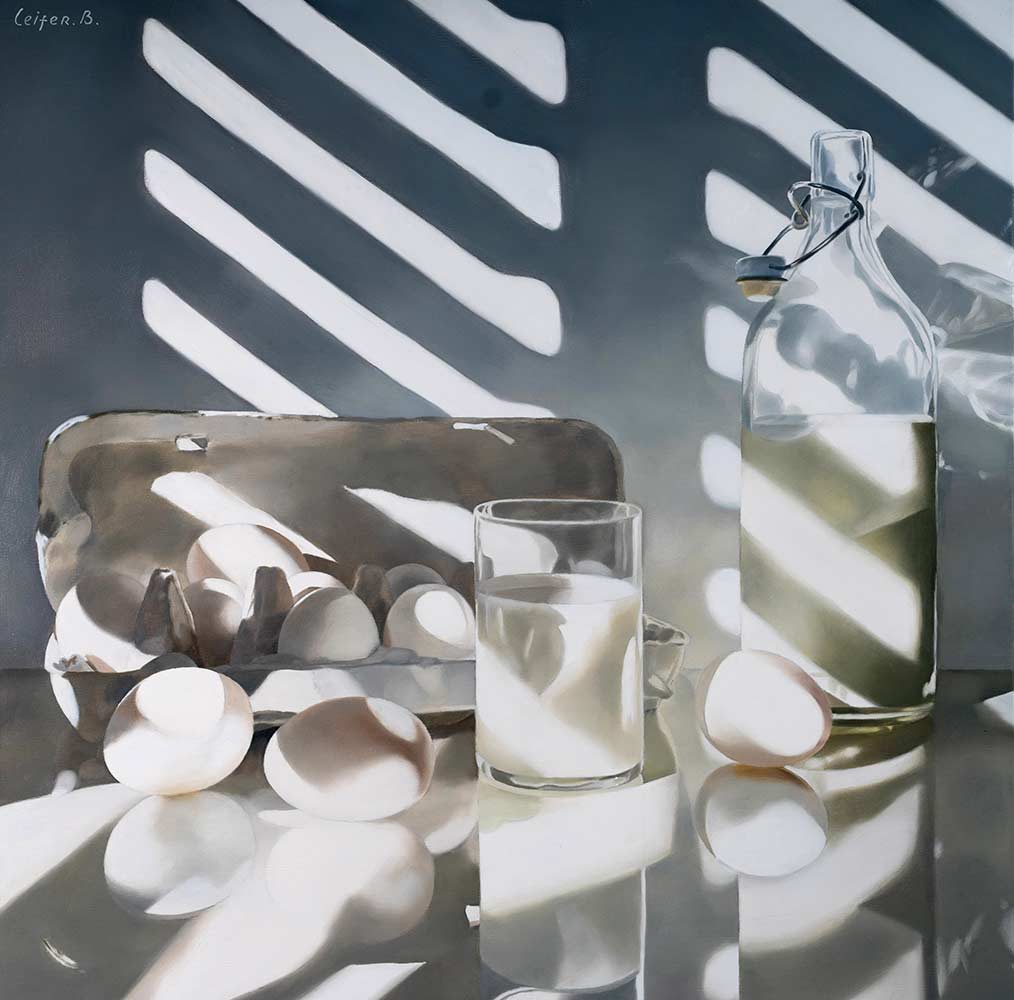
boris-leifer.com | ytusia@gmail.com | Facebook: @borisleiferart

